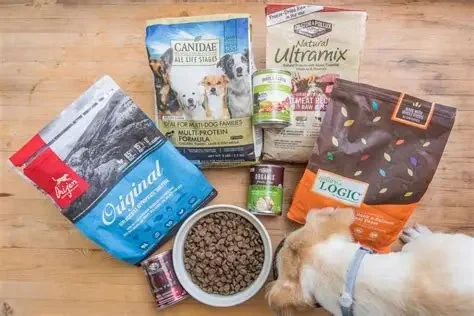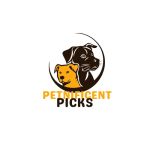
How to Vet a New Pet Food Brand: 10 Warning Flags
- Understanding the Importance of Pet Food Selection
- 10 Warning Flags to Look for in a New Pet Food Brand
- How to Research a Pet Food Brand Effectively
- Real-life Case: Choosing the Right Pet Food
- Recommended Pet Food Brands
Choosing the right food for your pet is one of the most important decisions you can make as a pet owner. With countless pet food brands on the market, how can you be sure you’re selecting the best one for your furry friend? The right food not only ensures your pet gets the nutrition they need but also promotes overall health and longevity. However, with so many options, it's crucial to vet new pet food brands carefully. Below, we’ll outline the top warning signs to watch for when evaluating a new pet food brand.

Desert Veterinary Medical Specialists
ScottsdaleMaricopa CountyArizona
22595 N Scottsdale Rd Suite 100, Scottsdale, AZ 85255, USA
10 Warning Flags to Look for in a New Pet Food Brand
1. Unclear or Vague Ingredient List – If the brand's ingredient list is hard to read, or if there are vague terms like “meat by-products” without clarification, that’s a red flag. You should know exactly what your pet is eating.
2. No Clear Source of Protein – High-quality pet foods should clearly list a specific animal protein (like chicken, beef, or lamb). A generic term like “meat” could indicate lower-quality ingredients.
3. Excessive Fillers – Pet foods that list grains such as corn, wheat, or soy as the first ingredients may contain excessive fillers. These ingredients don’t provide much nutritional value and could be a sign of low-quality food.
4. Lack of AAFCO Certification – The Association of American Feed Control Officials (AAFCO) sets nutritional standards for pet food. If a brand doesn't mention AAFCO certification, it may not meet the required nutritional standards.
5. Unsubstantiated Health Claims – Avoid brands that make lofty health claims without providing evidence or backing. If a brand claims to improve joint health, digestion, or coat quality but doesn't provide any research or certifications, be cautious.
6. Excessive Use of Artificial Additives – Pet food brands that use artificial colors, flavors, or preservatives may be sacrificing your pet’s health for marketing purposes. Choose brands that focus on natural ingredients and minimal processing.
7. Imported Ingredients from Untrusted Sources – Pet foods that source ingredients from countries with less stringent regulations can pose risks. Always check where the ingredients are coming from, especially if you’re concerned about quality and safety.
8. Lack of Transparency – A trustworthy pet food brand should have clear and accessible information about their sourcing, manufacturing, and testing processes. If a brand is secretive or doesn't provide this information, it’s a major red flag.
9. Price Too Good to Be True – While affordability is important, extremely cheap pet food can be a sign of poor-quality ingredients. High-quality pet food may cost more because it contains premium ingredients that benefit your pet’s health.
10. Limited or No Reviews from Veterinarians – Veterinary recommendations and endorsements can be a sign that a pet food brand is trustworthy. If there are few or no reviews from veterinarians or pet owners, it’s worth questioning the brand’s quality and reliability.

Cave Creek Equine Sports Medicine & Surgery
34705 N 14th St, Phoenix, AZ 85086, USA
How to Research a Pet Food Brand Effectively
Before committing to a new pet food brand, research is crucial. Here are some steps to ensure you're making an informed choice:
1. Check for Reviews and Testimonials – Look for reviews from other pet owners and check trusted pet food review websites. Positive feedback from a wide range of users, including veterinarians, is a good sign.
2. Consult with Your Veterinarian – Veterinarians are an excellent resource when it comes to pet food recommendations. They can help guide you toward a brand that’s nutritionally balanced for your pet’s specific needs.
3. Visit the Brand’s Website – A reputable pet food brand should have a user-friendly website with detailed information about their ingredients, sourcing, and manufacturing process. Look for transparency about their nutritional standards and any certifications.
4. Look for Independent Testing – Brands that conduct third-party testing or have their products evaluated by independent laboratories are more likely to meet high standards of quality and safety.
Real-life Case: Choosing the Right Pet Food
Sarah, a dog owner, was searching for a new food brand for her Labrador, who had a sensitive stomach. She was drawn to a brand that made impressive claims about improving digestive health. However, after reading reviews and consulting with her vet, she discovered that the brand had several concerning issues: the ingredient list was vague, and there were no credible health studies backing their claims. Sarah decided to choose a more trusted brand recommended by her veterinarian, which provided transparency and clear ingredient sourcing. Her dog’s digestive issues improved significantly, reinforcing the importance of careful selection.
Recommended Pet Food Brands
When looking for the best pet food, always prioritize quality ingredients, transparency, and trusted reviews. At Pet & Puppy, we offer a curated selection of high-quality pet food brands that meet the highest nutritional standards. Whether you're looking for food for a puppy or a senior pet, we have a variety of trusted, well-reviewed brands to choose from.
Explore our online store for premium pet food options that will help ensure your pet’s health and happiness for years to come.







 Princeton Veterinary Hospital4.0 (821 reviews)
Princeton Veterinary Hospital4.0 (821 reviews) Thomas Ridge Kennels4.0 (17 reviews)
Thomas Ridge Kennels4.0 (17 reviews) All Creatures Animal Hospital4.0 (354 reviews)
All Creatures Animal Hospital4.0 (354 reviews) Fatty Paws Pet Boutique0.0 (0 reviews)
Fatty Paws Pet Boutique0.0 (0 reviews) CityVet | Lone Mountain Veterinary & Urgent Care4.0 (104 reviews)
CityVet | Lone Mountain Veterinary & Urgent Care4.0 (104 reviews) Petnificent Picks5.0 (1 reviews)
Petnificent Picks5.0 (1 reviews) How to Transition a Senior Pet to Easier-to-Eat Food: A Comprehensive Guide
How to Transition a Senior Pet to Easier-to-Eat Food: A Comprehensive Guide The Hidden Dangers in Common Pet Supplies: What You Need to Know
The Hidden Dangers in Common Pet Supplies: What You Need to Know Managing Chronic Conditions in Pets: Essential Diet, Medication & Lifestyle Tips
Managing Chronic Conditions in Pets: Essential Diet, Medication & Lifestyle Tips How to Build a Pet Emergency Kit: Essentials You Need
How to Build a Pet Emergency Kit: Essentials You Need Best Practices for Pet Grooming Frequency by Breed: Keeping Your Pet’s Coat Healthy
Best Practices for Pet Grooming Frequency by Breed: Keeping Your Pet’s Coat Healthy The Effect of Seasonal Allergies on Pets & How to Help
The Effect of Seasonal Allergies on Pets & How to Help